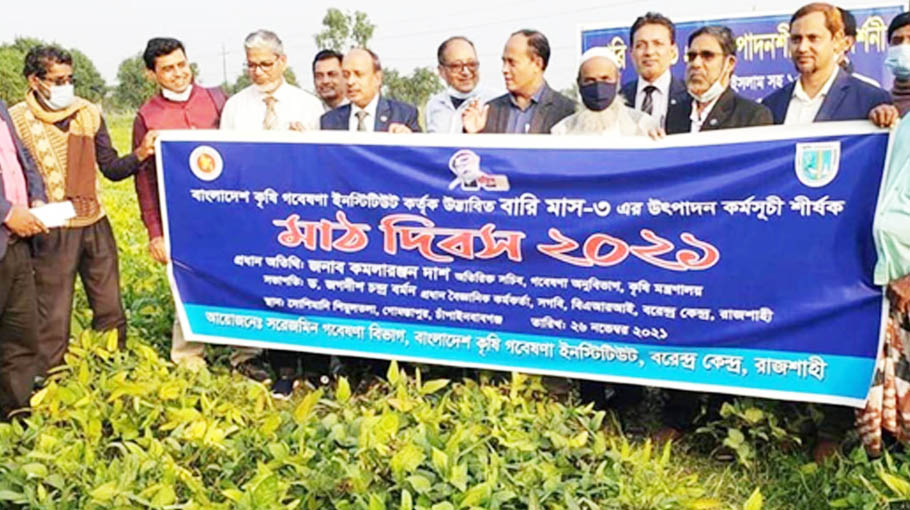Agriculturists for expansion of ‘maskalai’ cultivation for its climate-tolerant feature

Agricultural scientists and researchers have urged the farmers to cultivate the newly innovated maskalai (black gram) variety as it is high yielding and tolerant to the adverse impact of climate change.
There is bright prospect of expanding the variety in the region, including its vast char (river bed) lands, and the farmers are the vital force of materializing the prospects, they said.
The experts came up with the observation while addressing a farmers' field day titled “Production Programme of BARI MASH-3 released by Bangladesh Agriculture Research Institute (BARI)” on Friday afternoon.
The On Farm Research Division (OFRD) of BARI organized the programme in Doshimani Shimultala area under Gomostapur Upazila in Chapainawabganj district aimed at popularizing the variety among the grassroots farmers.
Additional Secretary to the Ministry of Agriculture Kamalaranjan Das addressed the meeting as the chief guest. Director of Pulse Research Centre Dr Mohiuddin spoke as the special guest with OFRD, Barind Centre Principal Scientific Officer Dr Jagadish Chandra Barman in the chair.
Chief Scientific Officer of Regional Horticulture Research Station Dr Mukhlesur Rahman, Principal Scientific Officer of Fruit Research Station Dr Alim Uddin and OFRD Senior Scientific Officer Dr Shakhawat Hossain also spoke.
Farmers apprised the experts that they have become happy after cultivating the variety on the fallow lands in vast char areas during the last couple of years.
Acreage of the variety is gradually increasing as per acre yield is more than the existing indigenous varieties.
Huge char lands of the Padma and Mohananda rivers which remained fallow after monsoon for a long time are being brought under the mass-kalai farming.
The farmers viewed that they earlier used to cultivate indigenous mash-kalai varieties in a scattered way and many of the lands would remain fallow. Apart from this, yield of those was very poor, hardly one to one and a half mounds per bigha. After getting seeds from OFRD and according to its guidelines, they have been cultivating the new variety since last year.




